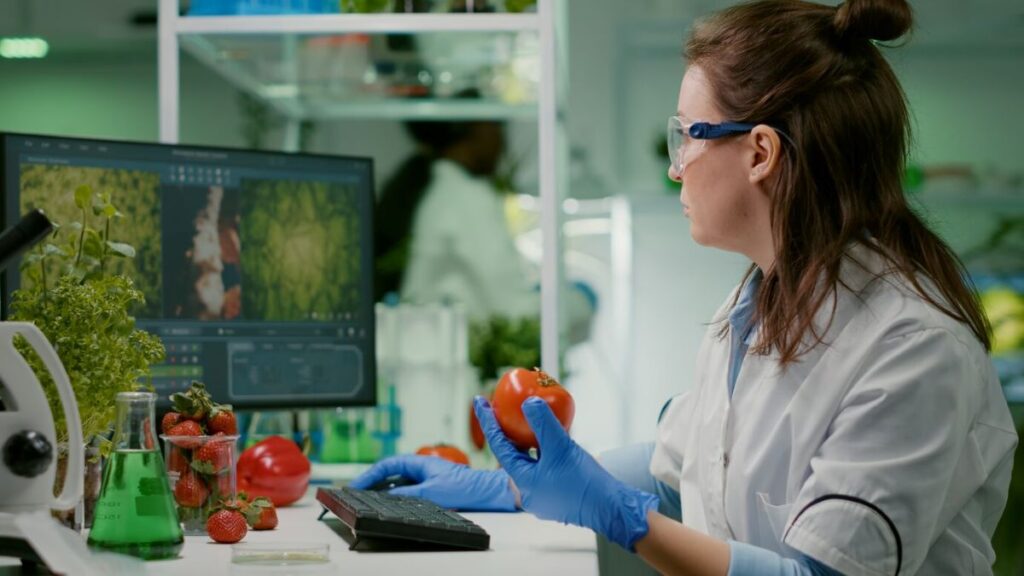In the world of food safety, maintaining the correct temperature is crucial to preventing foodborne illnesses. As technology advances, the methods for monitoring food temperatures have evolved significantly. Two popular options on the market today are traditional food temperature probes and modern wireless monitoring devices. Each has its own set of advantages and disadvantages, making it essential for food service professionals and home cooks alike to understand their options. This article will explore the pros and cons of both tools, helping you make an informed decision for your culinary needs.
Understanding Food Temperature Probes
What Are Food Temperature Probes?
Food temperature probes, often referred to as thermometers, are handheld devices designed to measure the internal temperature of food. They come in various types, including digital, dial, and infrared thermometers. These tools are essential for ensuring that food is cooked to safe temperatures, thus reducing the risk of foodborne pathogens. The importance of these devices cannot be overstated, as they play a crucial role in food safety and quality, helping to maintain the integrity of culinary creations.
Advantages of Food Temperature Probes
One of the primary benefits of food temperature probe is their accuracy. High-quality probes can provide precise temperature readings within seconds, allowing cooks to ensure that meat, poultry, and other foods are cooked safely. Additionally, many digital probes feature instant-read capabilities, which can be invaluable in fast-paced kitchen environments. This quick feedback not only aids in achieving the perfect doneness but also helps in preventing overcooking, which can lead to dryness and loss of flavour.
Another advantage is the simplicity of use. Most temperature probes require minimal setup—just insert the probe into the food, and the temperature is displayed on the screen. This straightforward operation makes them accessible for both professional chefs and home cooks. Furthermore, many modern probes come equipped with additional features such as timers and alarms, which can alert the user when the desired temperature is reached, thus allowing for greater multitasking in the kitchen.
Disadvantages of Food Temperature Probes
While food temperature probes are invaluable, they do have some limitations. One significant drawback is that they require manual operation. This means that a cook must be present to take the temperature, which can be inconvenient in busy kitchens where multitasking is essential. In such scenarios, the need to pause and check the temperature can disrupt the flow of cooking, potentially leading to delays in service.
Moreover, traditional probes may not be suitable for long-term monitoring. Once the temperature is taken, the probe must be removed, and there is no ongoing data collection. This can lead to missed opportunities for monitoring temperature fluctuations over time, especially during cooking processes that require precise temperature control. For instance, when slow-roasting meats or making delicate confections, maintaining a consistent temperature is vital, and the inability to continuously monitor can result in less-than-ideal outcomes. As a result, some chefs may opt for more advanced solutions, such as wireless or Bluetooth-enabled probes, which allow for remote monitoring and greater flexibility in the kitchen.
The Rise of Wireless Monitoring Devices
What Are Wireless Monitoring Devices?
Wireless monitoring devices represent a significant leap in food temperature management technology. These devices typically consist of sensors placed in or around food items, which transmit temperature data to a central hub or a smartphone app. This allows for real-time monitoring and alerts, ensuring that food remains within safe temperature ranges. The technology often employs advanced algorithms to analyse the data, providing insights not only into current temperatures but also into trends over time, which can be invaluable for optimising food storage practices.
Advantages of Wireless Monitoring Devices
One of the most significant advantages of wireless monitoring devices is their ability to provide continuous temperature readings without the need for manual intervention. This feature is particularly beneficial in commercial kitchens, where staff can focus on other tasks while the device monitors temperatures in the background. In addition, these devices can often be integrated with other kitchen management systems, creating a seamless workflow that enhances overall efficiency. For instance, some systems allow for automatic logging of temperature data, which can be useful for compliance with health regulations and for audits.
Additionally, many wireless devices come equipped with alert systems that notify users when temperatures fall outside of the designated safe range. This proactive approach can help prevent food spoilage and reduce the risk of foodborne illnesses. Moreover, some advanced models offer cloud connectivity, enabling users to access their data remotely and make informed decisions even when they are not physically present in the kitchen. This feature is particularly useful for restaurant owners who manage multiple locations, as it allows for centralised monitoring and management of food safety across all sites.
Disadvantages of Wireless Monitoring Devices
Despite their many benefits, wireless monitoring devices are not without their drawbacks. One major concern is the reliance on technology. These devices require batteries or a power source, and any failure in the system can lead to inaccurate readings or complete data loss. Additionally, the potential for connectivity issues can pose a challenge, especially in environments with thick walls or interference from other electronic devices. Users must ensure that their Wi-Fi or Bluetooth connections are stable to maintain the integrity of the monitoring process.
Furthermore, the initial cost of wireless monitoring devices can be significantly higher than traditional probes. For small businesses or home cooks, this investment may not seem justifiable, especially when simpler solutions are available. Additionally, there may be a learning curve associated with setting up and using these devices effectively. Users must familiarise themselves with the technology, which can include downloading apps, configuring settings, and understanding how to interpret the data provided. This can be daunting for those who are not particularly tech-savvy, leading to frustration and potential underutilisation of the device’s capabilities.

Comparative Analysis: Food Temperature Probes vs Wireless Monitoring Devices
Accuracy and Reliability
When it comes to accuracy, both food temperature probes and wireless monitoring devices can provide reliable readings. However, traditional probes often excel in providing instant feedback, making them a preferred choice for quick checks. Wireless devices, on the other hand, may have slight delays in data transmission, which can be a consideration in time-sensitive situations.
Ease of Use and Convenience
Food temperature probes are straightforward and easy to use, requiring minimal training. In contrast, while wireless monitoring devices can be more complex to set up initially, their long-term convenience often outweighs this drawback. Once configured, they allow users to monitor multiple food items simultaneously without constant attention.
Cost Considerations
Cost is a significant factor for many users. Traditional food temperature probes are generally more affordable, making them accessible for individuals and small businesses. Wireless monitoring devices, while more expensive upfront, can save money in the long run by reducing food waste and improving operational efficiency.
See Also : How to Achieve Food Safety and Compliance in Your Business
Choosing the Right Tool for Your Needs
Factors to Consider
When deciding between food temperature probes and wireless monitoring devices, several factors should be taken into account. The scale of your cooking operation is paramount. For small-scale cooking or occasional use, a simple food temperature probe may suffice. However, for larger operations, such as restaurants or catering services, investing in wireless monitoring technology could enhance efficiency and food safety.
Specific Applications
Different cooking methods and food types may also influence your choice. For instance, when grilling or roasting, a traditional probe might be more practical for quick checks. Conversely, when holding food at safe temperatures in a commercial setting, a wireless device can provide ongoing monitoring without the need for constant supervision.
Future Trends in Food Temperature Monitoring
As technology continues to evolve, the future of food temperature monitoring looks promising. Innovations such as smart kitchen appliances that integrate temperature monitoring capabilities are becoming more common. These advancements could further blur the lines between traditional probes and wireless devices, offering users even more flexibility and control over their cooking processes.

Conclusion
In conclusion, both food temperature probes and wireless monitoring devices have their unique advantages and disadvantages. Traditional probes offer simplicity and accuracy, making them ideal for quick checks and smaller operations. In contrast, wireless monitoring devices provide continuous oversight and alerts, which can be invaluable in larger or more complex cooking environments.
Ultimately, the best choice depends on individual needs, budget, and the specific context in which the tools will be used. By understanding the pros and cons of each option, cooks can ensure they maintain the highest standards of food safety and quality in their culinary practices.
As technology continues to advance, staying informed about the latest developments in food temperature monitoring will be essential for anyone involved in the food industry. Whether opting for a traditional probe or a cutting-edge wireless device, the goal remains the same: to keep food safe and delicious.

